Import Like It’s 1999: These 5 forbidden fruits become legal in 2024
There’s nothing quite like the anticipation of permission. Whether it’s looking forward to getting that driver’s license at 16, or in this case eagerly awaiting a foreign-market car that’s about to turn 25, it’s hard not to get a little giddy. Thanks to the federal so-called 25-year import rule, foreign-market cars that reach that age become exempt from enough Department of Transportation red tape and regulations (though EPA compliance remains mandatory) that you can register them in the U.S. with relative ease. Every year is a new opportunity to experience a fresh set of cars that become available to American enthusiasts.
The chance to put to pavement cars we’ve only watched with envy on YouTube or driven in pixelated form with a joystick means there’s a good bit of pent-up demand. The desire is even more pronounced in 2024; the class of 1999 was a big year, a cohort of digitally famous cars that have been forbidden fruit for too long. Although honorable mentions like the Daihatsu Naked, the Mitsubishi Dignity, or the Mitsubishi Pistachio have fun names, the selection below includes our favorites eligible to hop on a boat to the U.S. in 2024.
(By the way, the most important car on this list is arguably the R34-generation Nissan Skyline GT-R, but we felt it deserved a deeper look. You can read about it here).
TVR Tuscan Speed Six

TVR of Blackpool, England, has been in and out of business more times than a trap house next door to a police station. If this boom and bust sports car company ever had a golden age, though, it was the 1990s and 2000s under the ownership of Peter Wheeler, a guy who thought ABS and driver aids were silly.
Partly because of that attitude, we never got any of those Wheeler-era gems here in the States, though plenty of us have been lusting after them since Gran Turismo 3. Recently, however, PlayStation pixels have been turning into real-life metal and plastic as ‘90s TVRs turn 25 and trickle over across the pond. The Griffith (which debuted in 1990), Chimaera (1992) and Cerbera (1996) are all legal here now. In 2024, so will the Tuscan Speed Six, which will be the first time anybody over here has seen a Tuscan since the 2001 movie Swordfish. Sure, John Travolta ain’t exactly James Bond, but the car did star in a pretty great chase scene:
Named after its Ford-powered Tuscan predecessor from the 1960s but now with TVR’s proprietary “Speed Six” under the hood, the Tuscan Speed Six debuted in 1999. Although Wheeler wouldn’t let anyone in the automotive press get their hands on one until 2000, once they did, they heaped on the praise. Car magazine proclaimed that “On the right road, in the right weather, the Tuscan is in the 360 Modena or 911 GT3 league.” The aforementioned Speed Six engine started as a 3.6-liter 350-hp unit and quickly grew to 4.0 and then 4.2 liters, while an available “Red Rose” package brought more power plus handling upgrades. Built on a shortened version of the Cerbera’s platform, the 2400-pound, rear-drive Tuscan can hit 60 in around four seconds.
Then there are the looks. Whereas earlier TVRs like the Cerbera and Chimaera are distinctive but conventionally pretty, the Tuscan borders on avant-garde. The deep curves and pronounced waves that touched every surface, the wide dot grid-grille, and the unusual lighting arrangements were unlike anything else on the road in the days of Y2K. As if the lines weren’t enough to grab attention, Tuscans were also available with color shift paint that changed shades depending on how the light hit the car, not unlike the “Mystichrome” paint available on the SVT Mustangs of the same era. The swoops and curves continued to the interior, where the Starship Enterprise-like craziness of the Cerbera’s cockpit got an extra dose of bespoke aluminum switchgear and even a brass-faced binnacle with an LCD display.
The Tuscan Speed Six started production as a targa-top coupe, but we’ll have to wait a few years for the full convertible and the face-lifted and improved 2005–06 model. Fewer than 2000 Tuscans were built in total, and they wouldn’t be easy to live with in America. TVR’s proprietary engines have their quirks as well as short service intervals, and chances are there aren’t any mechanics in your town that know their way around a Speed Six.
1999-02 Nissan Silvia S15

It may live in the Godzilla-sized shadow of the R34 GT-R, but the Nissan Silvia S15, also built from 1999 to 2002, is a similarly significant car available for import next year. Originally only sold in Japan, Australia and New Zealand, the S15 is the seventh, last, and arguably best generation of Silvia, a series of small four-cylinder coupes that dates back to the 1960s. That makes the Silvia an older Nissan badge than either the Z or the Skyline GT-R.
Various versions of Nissan Silvia have sold in the U.S. (we knew them as the 200SX and 240SX) but the S15 never made it. Nissan sold them in “Spec-S” and “Spec-R” variants, with both offering an “Aero” package with rear wing and body kit. The Spec-S serves as the base model, with rear-wheel drive, a naturally aspirated SR20DE four-cylinder, and either five-speed manual or four-speed auto. The Spec-R came with a turbocharger, six-speed manual and helical limited-slip differential, plus beefed up chassis, suspension, and brakes. Nissan’s HICAS four-wheel steering system was an available option.
The Spec-R, then, is the one to look for, but the biggest appeal of these Silvias as a whole is how tunable they are. The S15 platform is light and well-balanced, and while the turbocharged SR20DET makes an impressive 247 hp and 203 lb-ft in stock form, people have gotten 700 hp out of it. Aftermarket support for these cars is huge and they are very popular drift cars, so while finding a clean un- or minimally-modified example from overseas will be difficult, it will likely be a rewarding vehicle when you do.
1999-03 Toyota Crown (S170)
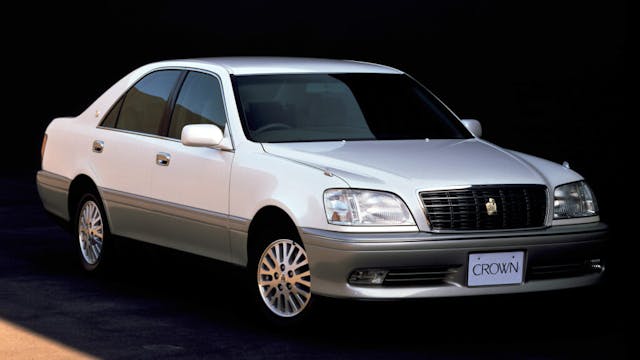
Every few years Toyota updates its line of Crown sedans and wagons, and American enthusiasts looking for subtly cool JDM luxury have been importing them for years now. For 2024, the 11th generation Crown, aka the S170, will join the ranks. It was available with the famous 3.0-liter 2JZ straight-six made most famous in the Supra, in this case mated to a mild hybrid system for silky smoothness rather than speed. Other powertrains included the 2.0-liter 1G-FE, 2.5-liter 1JZ-FSE, 2.5-liter 1JS-GE and 2.5-liter 1JZ-GTE turbo, all dual-overhead cam straight-sixes. S170 Crown sedans were available in “Athlete” or “Royal” trim, and Toyota built a wagon version (or an “Estate” if you’re feeling fancy) from late 1999 to 2007. A full-size sedan built on the same S170 platform, called the Crown Majesta, debuted in September 1999.
A big car by JDM standards, an S170 Crown is similar in size to the contemporary Mercedes E-Class, conservatively styled, and well-built. It’s sort of like the Lexus GS’s cooler, sexier cousin who’s visiting from overseas. Especially in wagon form.
1999-2001 Mitsubishi Lancer Evolution VI
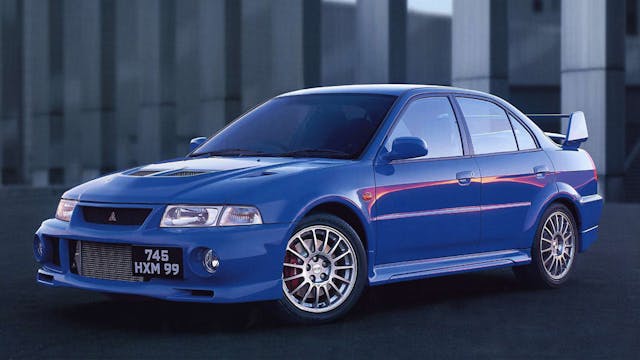
Mitsubishi really isn’t what it used to be, and the current lineup from the three-diamond badge is yawn-worthy. No matter, there are still great cars from the back catalog to get excited about. The rally-bred Lancer “Evo” needs no introduction, and Mitsubishi’s spiciest sedan didn’t arrive here until its eighth generation, but the VI was a significant model in the series and the next in line to be legal for import to the U.S.
Compared to the EVO V, the VI was more, well, evolution than full redesign. The engine was a further development of the same 4G63T 2.0-liter turbo four from the very first Evo, but in the VI it now had a bigger oil cooler and new pistons. Power was (under)rated at 276 hp and 274 lb-ft, put to the wheels with a five-speed manual and all-wheel drive that incorporated an Active Yaw Control (Mitsubishi’s term for electronically controlled limited-slip) rear differential. Bodywork was revised from the Evo V as well, the most noticeable change being the movement of the fog lights further apart in the front bumper.
Announced in late 1998, with production starting in early 1999, the Evo VI was available in “RS” or “GSR” trim, as well as a lighter weight, higher horsepower “RS Sprint” model. Car and Driver tested an Evo VI in 2000, measuring 5.1 seconds to 60 mph and a 13.9-second quarter-mile, and noting that “the Lancer still drives with typical Japanese-car ease” but “on the highway, this thing scoots into gaps in fifth gear with the kind of throttle response usually reserved for Vettes and Vipers—and does so extremely smoothly, thanks to Mitsubishi’s balance-shaft engine.”
The Evo VI also came out in the midst of Mistubishi’s bitter rivalry with Subaru in the World Rally Championship, and probably the most desirable Evo VI is the Tommi Mäkinen Edition. Named for Mitsubishi’s Finnish rally ace who had won four straight World Rally Championship driver titles behind the wheel of a Lancer, Tommi Mäkinen Editions (TMEs) brought the goods: a more aggressive front bumper, embossed Recaro seats, wider Enkei wheels, leather Momo steering wheel and shift knob, a quicker-spooling titanium turbine for the turbo, lower ride height, and faster steering ratio. Sources range from 2500 to about 4100 TMEs produced, and examples have already sold for six figures in Europe. That model didn’t come out until 2000, though, so the still potent “regular” models will have to suffice for 2024.
1999-2019 Pagani Zonda
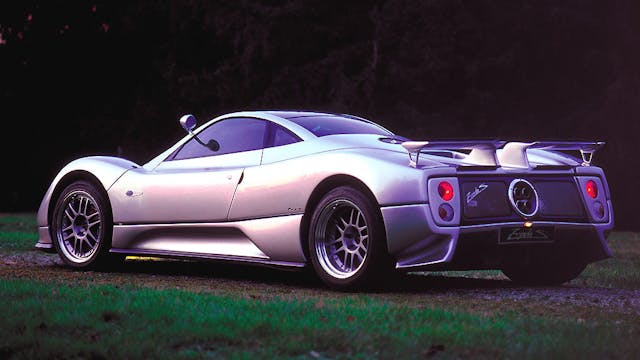
This one requires deep patience and even deeper pockets but, technically, the ultra-exotic and ultra-exclusive Pagani Zonda C12 came out in 1999. Founded by former Lamborghini man Horacio Pagani, the company seemingly came out of nowhere with this absolute masterpiece at the ’99 Geneva Motor Show and has built some of the sexiest and most exciting cars on the road ever since. Low production and high cost mean that each car is practically unique, but they all share a breathtaking interior, big Mercedes V-12 engine, and carbon fiber construction. While a few Zondas are in the U.S. via the “Show or Display” exemption, they were never officially federalized.
The “C12” is the original Zonda from 1999 and most sources point to there being just three examples sold to customers, so good luck finding one. The same goes for all variants, though. That there are dozens of special edition Paganis is a bit misleading, as many of these were one-offs. In all, about 140 Zondas of all types were built.
***
Check out the Hagerty Media homepage so you don’t miss a single story, or better yet, bookmark it. To get our best stories delivered right to your inbox, subscribe to our newsletters.
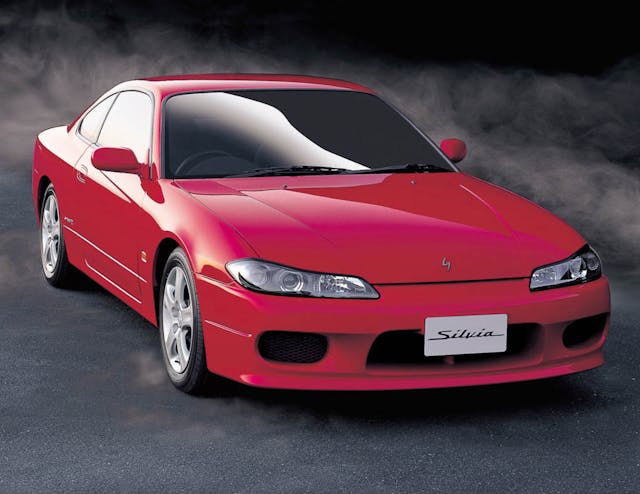

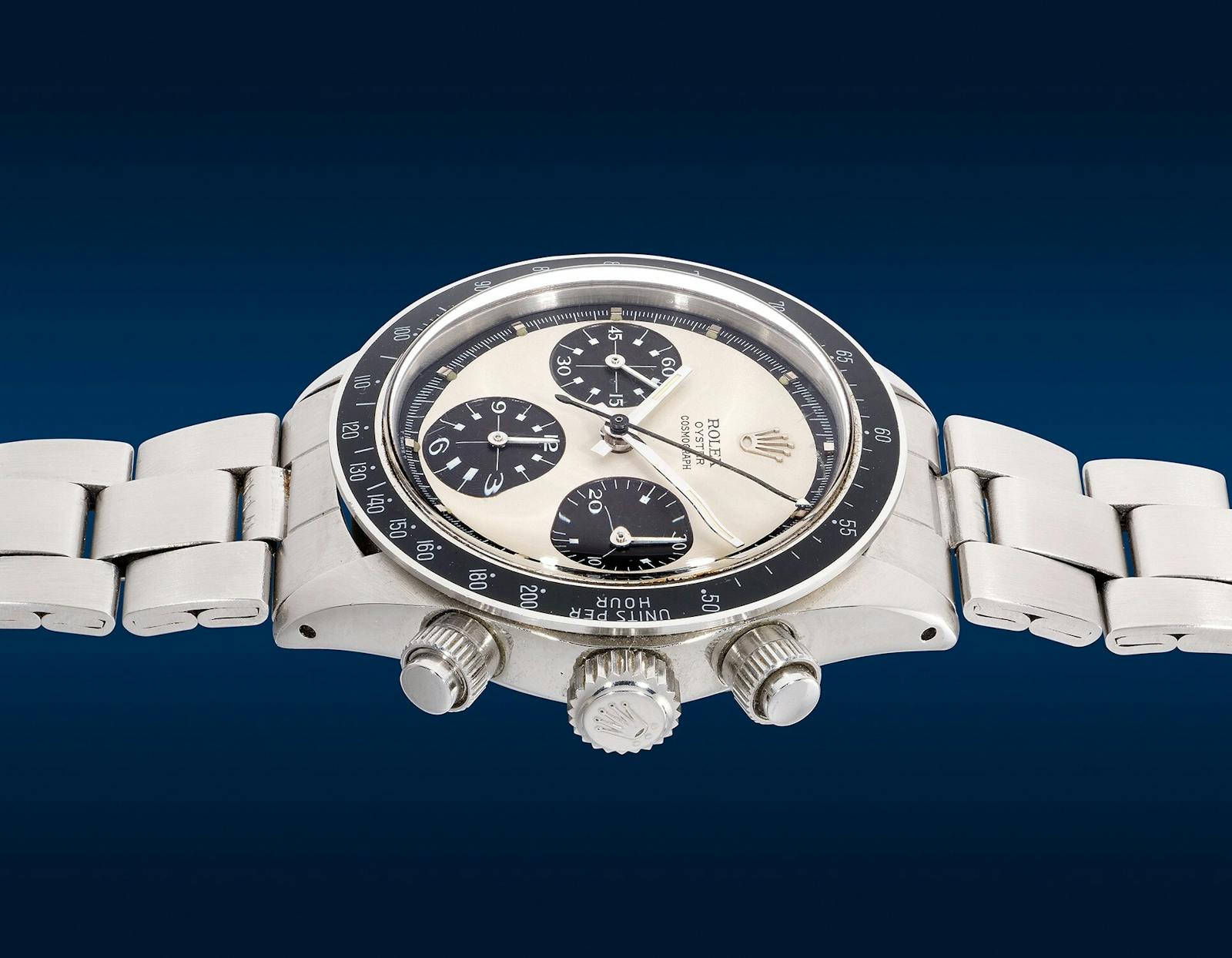
The Nissan Silvia S15 Spec-R, Toyota Crown (with a 1JZ-GTE turbo) or Mitsubishi Lancer Evolution VI are my pics here.
That was back when Nissan was still a Japanese company,right?
Nissan originally phased out Datsun in March of 1986.
Nissan=Datsun=Nissan. I think he’s referring to Carlos Ghosn in the Renault years. And, yes (kinda/sorta) when Nissan was a Japanese company, because this Sylvia would have been designed prior to the “alliance” and built during it.
A Crown wagon could be a pretty useful car. The front styling is a little bland, but perhaps the long roof would mitigate that effect a bit. And the 2JZ is near bulletproof, very smooth, and would have pretty good parts support.
So basically, all except the Pagani are right-hand drive.
No the evo was manufactured with RHD examples
LHD! Can’t edit original post.
Absolutely love the styling on the TVR Tuscan speed six. I remember seeing it in swordfish back in 2001 and what an impression a car can make on this guy when he was 18! That’s why I now own a lotus Elise SC. But this car started my fascination with British sports cars. IMHO still one of the best straight six NA engines ever designed.
MISSING: B5 Audi RS4!! That would’ve got you another leftie.
We need to start lobbying for reducing the 25-year requirement down to a more sensible amount of time. 15 years should be the target.
Need to lobby to eliminate it. Such nonsense! Just like everything the federal government does!
Sorry, none smog legal in California, that I know of.
I’d take the Nissan. That generation of Sylvia is also a fantastic looking car. I’d rather forego the high-end model for a more modest and more cleanly styled 5-speed car without the body cladding. The wing is okay, but the side skirts really break up the lines of that nicely proportioned coupe. Would I then modify it? Probably, but visually it needs nothing.
Nothing here I would want.
The Nissan Silvia S15 Spec-R
Whoopie do. I saw Ugg, Uggly, Uglier, and Ugliest. And gross polluters, unsafe, and quite sure if the tree hugging hippies knew about them they would cry and end the stupid 25 year rule to ban forever vehicles that do not meet US specs. Especially ones from countries that do not allow many American imports(if any at all).
he seems nice
Please add a disclaimer like: Legal to import next year, unless you live in CA.
How about the 1991 Eagle Talon AWD TSI ????
Pretty sure they sold those in North America
Of all of them, the Nissan I think has the best styling. It is just a good looking car. The Tuscan, Pagani are fancy jellybeans, and the Lancer is ho-hum, The Toyota Crown looks like Toyota is trying to make a Mercedes.
I’m surprised you don’t have the R34 GTR on this list. It becomes legal in January of 2024.